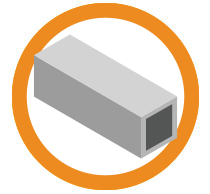In today's technological landscape, robotics is an essential part of STEM education. Here are some reasons why:
- Robotics learning provides hands-on learning opportunities for students, fostering critical thinking, problem-solving, and collaboration skills that are essential for success in the 21st century workforce.
- The integration of robotics in agriculture can help to increase efficiency, productivity, and accuracy while reducing the need for manual labour. Robotics can also help to reduce waste and improve crop yields by providing precise data on plant growth and health.
- The demand for skilled workers in the robotics industry is rapidly increasing, with a projected growth rate of 10% between 2020 and 2030.

Robotics has the potential to revolutionize the agriculture industry by increasing efficiency, reducing costs, and improving crop yields.
How do robotics integrate in agriculture today?
- Precision Farming: With the help of robotics, farmers can accurately analyze data on soil moisture, temperature, and other environmental factors. This data can be used to optimize irrigation and fertilizer application, leading to improved crop yields and reduced waste.
- Autonomous Equipment: Robotics can be used to automate tasks such as planting, harvesting, and crop monitoring. Autonomous equipment can work around the clock, allowing farmers to complete tasks more quickly and efficiently than with manual labor.
- Disease Detection: Robotics can be equipped with sensors and computer vision to identify and diagnose crop diseases at an early stage. This allows farmers to take corrective action before the disease spreads, therefore improving crop yield and reducing the need for pesticides.
- Crop Monitoring: Robotics can be used to monitor crops and identify areas that require attention. Drones equipped with cameras can fly over crops to collect data on plant health. This allows farmers to quickly identify problems and take corrective action.
To prepare students for the future of work in industries like agriculture, the Dobot robotic arm is an excellent educational tool for students of all levels.
Dobot robotic arms are just the beginning
- The Dobot is a versatile, high-precision robot that can perform a wide range of tasks, from 3D printing to pick-and-place operations.
- It is beginner friendly and will use a variety of programming languages including Python, making it a great tool for students to learn about robotics programming and automation.
- The Dobot robotic arm also comes with a range of educational resources, including online tutorials, lesson plans, and programming examples, thus making it easy for educators to incorporate it into their curriculum.
- Students can use the Dobot robotic arm to gain hands-on experience with robotics programming and automation, which can help to develop their critical thinking and problem-solving skills.
In conclusion, the integration of robotics in STEM education is essential to prepare students for the future of work, particularly in industries such as agriculture. The Dobot robotic arm is a great educational tool that can help students of all levels to learn about robotics and automation, providing them with the skills and knowledge they need to pursue a career in this field.
Explore Dobot robotics here







